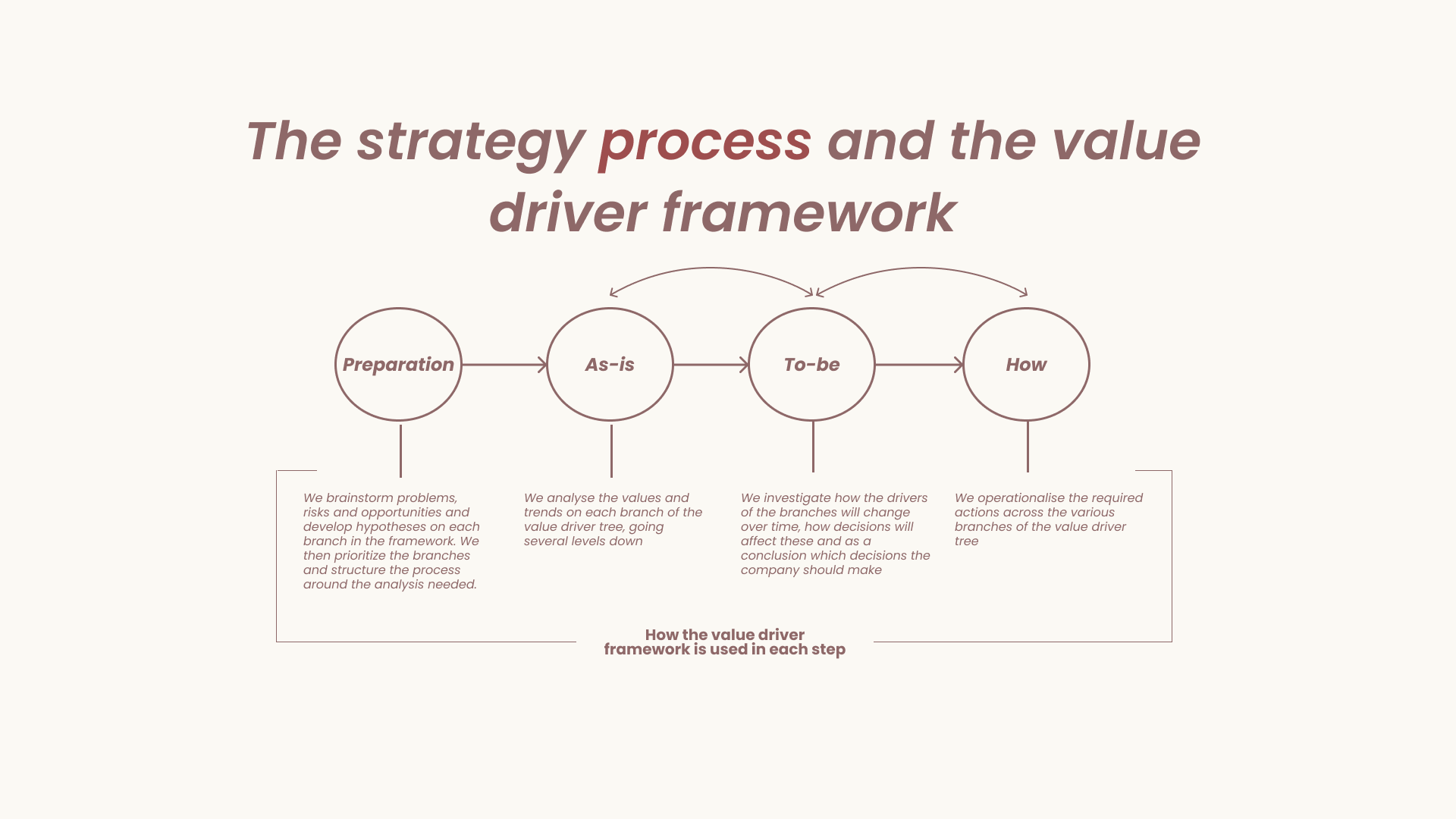The framework and the strategy process

In this chapter, I’ll explain why the Value Driver Framework is such a critical part of strategic work. We’ll walk through how it’s applied at each stage of the strategy process.
The strategy process itself is straightforward, consisting of four main steps. Note that this process is very iterative, with constant back and forth.
- Preparation
- AS-IS Analysis
- TO-BE Analysis
- Implementation ("How")
There is a simple way to connect the value driver framework to the process. We can think of each step of the strategy process as populating each branch of the value driver framework:
1. Preparation: ideas and hypotheses
2. As-is: historical data.
3. To-be: future values.
4. How: actions to bridge the current to the future
Let’s explore how the framework is used in each stage:
1. Preparation
This is where we lay the groundwork. We begin by mapping out all relevant branches of the Value Driver Framework and brainstorming key issues, challenges, opportunities, and trends that define the company’s historical and current state. This creates a pool of ideas and hypotheses that might influence value creation—or destruction.
Next, we combine these insights with financial and sensitivity analysis to prioritize the most critical areas. This step ensures we focus on what truly matters and sets the stage for a deeper, more targeted analysis.
The output is a valuedriver tree with a bunch of comments / notes / ideas (see examples here and here).
2. As-is Analysis
In this stage, we populate the Value Driver Framework with historical and current data—both quantitative and qualitative. We analyze the performance of each branch to build a comprehensive picture of the business.
The goal is to gain a deep understanding of unit economics and the value of the current customer base.
During this analysis, a set of opportunities, problems, and risks will naturally emerge across the value driver tree.
Imagine the value driver tree example from the preparation stage, with much more detail.
3. To-be Analysis
Here, we shift focus to the future. We populate the value drivers with potential opportunities, strategic bets, and key problems the company might pursue. The objective is to understand how these future scenarios impact various branches of the value driver tree and evaluate their effect on overall value creation.
For each initiative, its impact on all branches of the value driver tree should be considered.
4. How
This final step translates strategy into action. We break down each solution into concrete steps and map them back to the Value Driver Framework. This also wroks as the structure for accountability, monitoring, and reporting.
The Framework as a Communication Tool
Beyond its role in analysis, the Value Driver Framework serves as a powerful communication tool. It provides a shared language for discussing strategy and helps simplify complex ideas. During workshops and presentations, we use the framework to summarize findings, communicate progress, and structure our discussions.
In essence, the framework isn’t just an analytical tool—it’s the backbone of both strategy formulation and execution, guiding every step and ensuring clarity and alignment across the organization.